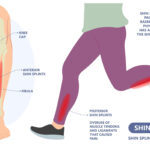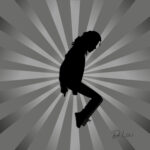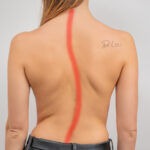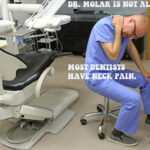Self Care Tools For Musicians On A Tour Bus – Dr. Lou Jacobs
Best body work tools to take on the road. I work with a lot of musicians, their crew, and management. When you are on a tour bus for weeks on end, it can be really rough on your body. While recently working with Gary Clark Jr., it came to my attention that I should have recommendations for tools that you might use on a tour bus to help ease the aches and pains of performing and being on the road. Heating Pad Theracane Percussion Massager Formula 303 *Ball in a sock *Exercise and stretching videos with Dr. Lou Heating pads are comforting, they promote blood flow and often reduce the tension and soreness of achy muscles. They are cheap, easy to use, and very helpful when you just feel sore and tight. Your tour bus should have ample outlets to plug one in. The Theracane is a plastic cane-like tool that is used to work on knots in muscle by oneself. They are designed so that the user can put pressure on any part of the body, to loosen it up. No need for tour bus electricity for this tool, it’s old school. A percussion massager does similar work...
read moreShin Splints: What are they? How can I fix them?
Shin Splints and How to Get Rid of Them by Dr. Aaron Vela What is a shin splint? To fully understand how to get rid of shin splints, we need to understand a little bit of anatomy. The tibia is your shin bone. On the outside of bone is an important layer of tissue called the periosteum which is involved in healing bone and acting as an anchor for ligaments and tendons to attach. The periosteum also has a lot of nerve endings that feel pain. Ligaments are connections from bone to bone, while tendons are connections from muscle to bone. There are several muscles that attach to the shin bone. In the case of shin splints, usually the culprits are either the tibialis anterior muscle (if the pain is more on the front-outside of the shin) or the soleus muscle (if the pain is more on the front-inside of the shin). Shin splints are caused when the tendons from these muscles repetitively pull on the periosteum, creating inflammation and irritation to this very nerve dense tissue, creating signals of pain. The reason why the tendons irritate the periosteum usually has to do with a combination of things,...
read moreMichael Jackson. Prince. Tom Petty. Back Pain and Opioids.
Michael Jackson, Prince, and Tom Petty walk into a bar…. Michael Jackson died on June 25, 2009. Prince was found dead on April 21, 2016. Tom Petty died on October 2, 2017. Though all very different personalities, they had one common note. Their causes of death were related to dependency on pain medication, ultimately for back pain. Although Michael Jackson’s problems are reported to have started after he was severely burned while filming the infamous Pepsi commercial, his pain later in life was related to low back pain caused by a fall on stage. Or off the stage as it were. At his time of death, his house was filled with painkillers like oxycontin, demerol and diprivan. According to testimony given by friends and former doctors, Michael Jackson was severely addicted to pain killers and other forms of anesthesia. What is not well, or publicly documented is what he tried for his back that didn’t involve medications. Perhaps it was too late, and he was so addicted to the pain meds from his 3rd degree burns, that natural methods for back pain were out of the question for him. It’s sad to think he may have had other options....
read moreWhat is Scoliosis and How is it treated?
What is scoliosis & what are the available options? by Dr. Aaron Vela Have you been told by a healthcare professional that you or your child has scoliosis? What is scoliosis? Scoliosis is an abnormal curvature of the spine that is seen in a front to back, or back to front, view of the spine. The spine normally has 3 curves that can be seen when looking at the spine from the side. These normal curves are in your neck, your mid back, and your lower back. These normal curves function as shock absorbers for the body. Scoliosis is a lateral curve in the spine or more easily put, a left or right curve in the spine that may lead to premature degeneration, pain, postural abnormalities, and restricted mobility. There are generally 5 different types of scoliosis. Congenital – meaning the person was born with it. Neuromuscular – which is caused by neuromuscular (nerve and muscle) conditions and their impact on the body, such as cerebral palsy. Degenerative – which occurs when the joints between vertebrae in the back of the spine have deteriorated. Functional – which is more or less a temporary type of scoliosis that can be...
read moreDentists, Hygienists, and neck pain. The whole tooth and nothing but the tooth.
Dentists, Hygienists, and neck pain. Dentists and Hygienists spend their careers stooped over patients, focusing on tiny objects in their mouths while maneuvering and manipulating equipment. Their intensity and focus are necessary to doing a great job, with the least amount of pain, but they are sacrificing their bodies, for your mouths. Neck pain is extremely common in dental professionals. Research has shown that 5% of people who suffer with neck pain are eventually legally disabled by the pain. A study published in the British Dental Journal reported that nearly 30% of premature retirements of dentists surveyed were due to musculoskeletal disorders. And in In a study done at UCSF, questionnaire responses indicated that 46-71% of dental students of all four years experienced neck, shoulder, and/or back pain, with more than 70% reporting pain by their 3rd year. It is not uncommon for dentists to wake up one day and wonder how they ended up “like this.” The wear and tear of repetitive work by the dentist or hygienist, leads to a slow accumulation of dysfunction, degeneration, and pain. One day, the straw breaks the camels’ back, and Dr. Molar wakes up in pain. It’s probably not too late...
read more




